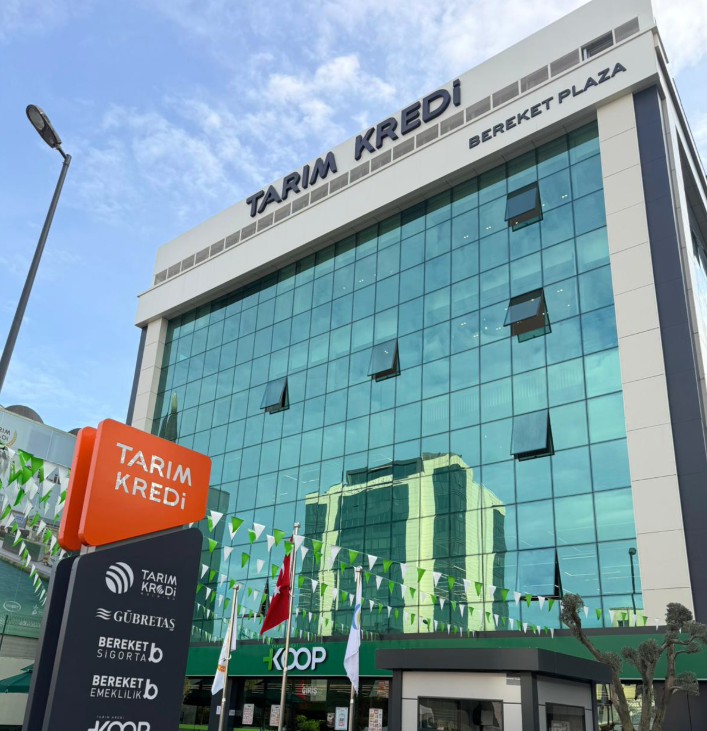

LEOLIFE 8.21.0+(10SO3)+ME
LEOLIFE organomineral fertilizers are a plant nutrition group formed by combining organic substances and mineral fertilizers in certain proportions. It refers to products obtained by the mixture or reaction of organic content with one or more primary, micronutrients.
Leolife 8.21.0 fertilizer contains nitrogen, phosphorus, sulfur and zinc, as well as 15% organic matter and 10% humic + fulvic acid. It supports the rooting of plants with its 19% water-soluble phosphorus content. Its sulfur content ensures quality products and high efficiency.
Benefits of 8.21.0+(10SO3)+ME
• In soils with low organic matter, the uptake of nutrients decreases by approximately 50% in nitrogen, 60% in phosphorus and 50% in potassium. It provides a rich growth environment for plants by ensuring sustainable soil fertility and increasing nutrient reserves in the soil through organomineral fertilizer applications. • In soils sufficient in organic matter, plant nutrients become available and most of them are taken up by plants. Salinity and pH levels carried into the soil by chemical fertilizers
organic problems contained in organomineral fertilizers.
It is buffered with substances.
• The combination of organic and inorganic raw materials in organomineral fertilizers increases labor force and fertilizer efficiency.
is more economical.
• With organomineral fertilizer applications, the hard structure in heavy-textured soils is dissolved and the soil softens, gaining an easily workable, permeable and airy structure. Thus, the mobility of plant roots in the soil increases.
• In light-textured (sandy) soils, it aggregates the soil by binding the sand grains together. Thus, the water retention ability of the soil increases and the rapid loss (washing away) of plant nutrients from the soil is prevented.
• It prevents the formation of a cream layer in the soil and supports the downward movement of water in the soil layers. In this way, germinated plants easily rise to the surface of the soil without being exposed to a physical obstacle, and the number of plants per unit area is preserved. Organic Matter in Our Soils
Soil, which is the environment where plants grow, is not only an inorganic mass but also contains air, water, organic matter and various living things. The important element of soil quality is soil organic matter and the number of microorganisms in the soil. The number of living things in the soil is an important criterion for soil fertility and quality. Our country's soils (except the Black Sea region) are generally poor in terms of organic matter content, with 70% having low organic matter content and 18% having very low organic matter content. In terms of soil quality and plant production, it is desired that the organic matter content in the soil be more than 3% (good level).
What are the effects of leonardite on agricultural soils?
Leonardite is uncharred rocks formed as a result of the decomposition (humification) of organic parts of plant and animal remains. Humic acid ratios of leonardites are important criteria. Leonardites containing humin substances and humic+fulvic acids neutralize acidic and basic soils. Leonardite regulates the pH of the soil by removing excess salinity and calcareousness. High pH in basic soils reduces its activity and quantity. It reacts with basic agents in the soil and forms insoluble compounds. In acidic soils, it retains and absorbs soluble toxic aluminum compounds. It increases the buffering feature of the soil against salinization. It reacts with salt solutions to protect plant roots. As a complement to fertilizers, leonardites absorb and retain nutrients in the root zone due to their high cation exchange capacity, prevent them from being washed away, and help them pass from the soil to the plant.
Sustainability in Agricultural Production
The most effective and fastest way to increase efficiency in agricultural production is chemical fertilizer applications. Chemical fertilizers used long-term and in high amounts have caused the physical and chemical properties of the soil to change, the pH to go beyond the plant's wishes, to cause soil problems such as salinization, and to decrease the soil organic matter. Sustainability in agricultural production includes establishing a balance between the physical, chemical and biological properties of soil and preparing a suitable soil environment for plant development. Instead of increasing the organic matter of all agricultural soils with organomineral fertilizers, it is aimed to benefit more effectively from nutrients by applying them together with the root zone and seeds. In line with these targets, the usefulness of chemical fertilizers will increase and agricultural production and quality will increase.
| Guaranteed Content | By mass (w/w)% |
|---|---|
| Total Nitrogen (N) | 8 |
| Ammonium Nitrogen (N-NH4) | 8 |
| Water soluble Phosphorus Pentaoxide (P2O5) | 19 |
| Water soluble Sulfur Trioxide (SO3) | 10 |
| Total Zinc (Zn) | 0,1 |
| Organic Matter | 15 |
| Maximum EC (ds/m) | 20 |
| Total Humic Fulvic Acid | 10 |
| Maximum Humidity | 20 |
| Total Phosphorus (P2O5) | 21 |
| Maximum Chlorine (Cl) | 1 |
| pH | 5,5-7,5 |
Documents and Forms











